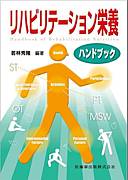膝・股関節人工関節置換術後(TKA・THA)のリハ栄養について、文献検索してみました。2つの文献抄録を紹介しますが、先に私の考えを書いておきます。
短期の入院リハでの減量にはかなり限度があるが、それでもTKA・THA患者にBMI30以上の肥満を認める場合には、入院リハ中およびその前後で減量を目指すべき。BMI25-29.9の過栄養の場合に減量を目指すかどうかは一概に言えない。
ただし、減量を目指す際にエネルギー摂取量(特に脂質)は少なくしても、筋肉量が減少しないように蛋白質の摂取量は十分確保することが望ましい。
非肥満群の中に正常栄養群と低栄養群が混ざっている可能性がある。日本ではこの違いを検討したほうがよい。
変形性関節症(OA)でTKA・THAを行う患者には低栄養は少ないと思われるが、関節リウマチ(RA)でTKA・THAを行う患者には悪液質・前悪液質を認める可能性が十分にある。RAの場合には、積極的に栄養評価、悪液質・前悪液質の有無を診断して加療することが望ましい。
以下、文献紹介です。
?Vincent HK, Vincent KR. Obesity and inpatient rehabilitation outcomes following knee arthroplasty: a multicenter study. Obesity (Silver Spring). 2008 Jan;16(1):130-6.
抄録一部訳:
人工膝関節置換術(TKA)後の入院リハがBMIの影響を受けるかを研究。
非肥満(BMI25未満)、過栄養(BMI25-29.9)、中等度肥満(BMI30-39.9)、重度肥満(BMI40以上)の4群で比較。
全群でADLは改善したが、非肥満群で最も大きく重度肥満群で最も少なかった。重度肥満群では他の群より医療費が高かった。
OBJECTIVE: This multicenter study examined whether inpatient rehabilitation outcomes following total knee arthroplasty (TKA) were influenced by BMI.
METHODS AND PROCEDURES: This was a retrospective, comparative study conducted using a computerized medical database and medical records derived from TKA patients, at 15 independent rehabilitation hospitals (N = 5,428). Patients were separated into four groups based on BMI: non-obese (BMI < 25 kg/m(2)), overweight (25-29.9 kg/m(2)), moderately obese (30-40 kg/m(2)), severely obese (BMI > or = 40 kg/m(2)). All patients completed an interdisciplinary inpatient rehabilitation program post-TKA. Total and individual functional independence measure (FIM) scores, length of stay (LOS), FIM efficiency scores, itemized hospital charges, and discharge disposition location, were collected.
RESULTS: The percentage of total FIM change was 7.5% greater by the time of discharge in the non-obese than in the very severely obese (P < 0.05). FIM efficiency was lowest in the severely obese as compared to the remaining groups (3.7 points (pts)/day vs. 4.0-4.3 pts/day; P = 0.044). The change in the motor FIM score from admission to discharge was 6.7-15.6% greater in the non-obese than in the remaining groups (P < 0.05). The changes in cognition FIM, toilet transfer and walking without assistance scores were higher in the non-obese as compared to the severely obese group (P < 0.05). The severely obese group had higher total, physical and occupational therapy and pharmacy charges than the remaining groups (P < 0.05).
DISCUSSION: An excessive BMI does not prevent gains during inpatient rehabilitation; however, these gains are made less efficiently and at a higher cost than those made when the BMI is low.
?Vincent HK, Weng JP, Vincent KR. Effect of obesity on inpatient rehabilitation outcomes after total hip arthroplasty. Obesity (Silver Spring). 2007 Feb;15(2):522-30.
抄録一部訳:
人工股関節置換術(THA)後の入院リハがBMIの影響を受けるかを研究。
非肥満(BMI25未満)、過栄養(BMI25-29.9)、中等度肥満(BMI30-39.9)、重度肥満(BMI40以上)の4群で比較。
全群でADLは改善したが、ADL効率(1日当たりのADL改善量)、入院期間、医療費は非肥満群が最もよく、重度肥満群で最も悪かった。自宅退院できなかった患者の割合は、非肥満群(13.1%)と重度肥満群(10.5%)で低かった。
OBJECTIVE: This study examined whether obesity affected inpatient rehabilitation outcomes after total hip arthroplasty (THA).
RESEARCH METHODS AND PROCEDURES: This was a retrospective, comparative study conducted using a computerized medical database derived from THA patients at a university-affiliated rehabilitation hospital (data from 2002 to 2005). Patients were divided into four brackets based on BMI: non-obese (<25 kg/m(2)), overweight (25 to 29.9 kg/m(2)), moderate obesity (30 to 39.9 kg/m(2)), and severe obesity (> or = 40 kg/m(2)). All patients completed an interdisciplinary inpatient rehabilitation program after THA. Functional independence measure (FIM) scores, length of stay (LOS), FIM efficiency scores (FIM/LOS), hospital charges, and discharge disposition location were collected.
RESULTS: FIM scores improved from admission to discharge similarly in all groups (25 to 29.5 points). However, FIM efficiency, LOS, and total charges were curvilinearly related with BMI (all p < 0.05). Total hospital charges were highest in the severely obese group compared with the overweight group (p < 0.05). Non-homebound discharge disposition rates were lower in non-obese (13.1%) and severely obese groups (10.5%).
DISCUSSION: Elevated BMI does not prevent FIM gains in THA patients during inpatient rehabilitation. However, BMI is related with FIM efficiency, LOS, and hospital charges in a curvilinear fashion. Severely obese patients can achieve physical improvements but at a lower efficiency and greater cost.
短期の入院リハでの減量にはかなり限度があるが、それでもTKA・THA患者にBMI30以上の肥満を認める場合には、入院リハ中およびその前後で減量を目指すべき。BMI25-29.9の過栄養の場合に減量を目指すかどうかは一概に言えない。
ただし、減量を目指す際にエネルギー摂取量(特に脂質)は少なくしても、筋肉量が減少しないように蛋白質の摂取量は十分確保することが望ましい。
非肥満群の中に正常栄養群と低栄養群が混ざっている可能性がある。日本ではこの違いを検討したほうがよい。
変形性関節症(OA)でTKA・THAを行う患者には低栄養は少ないと思われるが、関節リウマチ(RA)でTKA・THAを行う患者には悪液質・前悪液質を認める可能性が十分にある。RAの場合には、積極的に栄養評価、悪液質・前悪液質の有無を診断して加療することが望ましい。
以下、文献紹介です。
?Vincent HK, Vincent KR. Obesity and inpatient rehabilitation outcomes following knee arthroplasty: a multicenter study. Obesity (Silver Spring). 2008 Jan;16(1):130-6.
抄録一部訳:
人工膝関節置換術(TKA)後の入院リハがBMIの影響を受けるかを研究。
非肥満(BMI25未満)、過栄養(BMI25-29.9)、中等度肥満(BMI30-39.9)、重度肥満(BMI40以上)の4群で比較。
全群でADLは改善したが、非肥満群で最も大きく重度肥満群で最も少なかった。重度肥満群では他の群より医療費が高かった。
OBJECTIVE: This multicenter study examined whether inpatient rehabilitation outcomes following total knee arthroplasty (TKA) were influenced by BMI.
METHODS AND PROCEDURES: This was a retrospective, comparative study conducted using a computerized medical database and medical records derived from TKA patients, at 15 independent rehabilitation hospitals (N = 5,428). Patients were separated into four groups based on BMI: non-obese (BMI < 25 kg/m(2)), overweight (25-29.9 kg/m(2)), moderately obese (30-40 kg/m(2)), severely obese (BMI > or = 40 kg/m(2)). All patients completed an interdisciplinary inpatient rehabilitation program post-TKA. Total and individual functional independence measure (FIM) scores, length of stay (LOS), FIM efficiency scores, itemized hospital charges, and discharge disposition location, were collected.
RESULTS: The percentage of total FIM change was 7.5% greater by the time of discharge in the non-obese than in the very severely obese (P < 0.05). FIM efficiency was lowest in the severely obese as compared to the remaining groups (3.7 points (pts)/day vs. 4.0-4.3 pts/day; P = 0.044). The change in the motor FIM score from admission to discharge was 6.7-15.6% greater in the non-obese than in the remaining groups (P < 0.05). The changes in cognition FIM, toilet transfer and walking without assistance scores were higher in the non-obese as compared to the severely obese group (P < 0.05). The severely obese group had higher total, physical and occupational therapy and pharmacy charges than the remaining groups (P < 0.05).
DISCUSSION: An excessive BMI does not prevent gains during inpatient rehabilitation; however, these gains are made less efficiently and at a higher cost than those made when the BMI is low.
?Vincent HK, Weng JP, Vincent KR. Effect of obesity on inpatient rehabilitation outcomes after total hip arthroplasty. Obesity (Silver Spring). 2007 Feb;15(2):522-30.
抄録一部訳:
人工股関節置換術(THA)後の入院リハがBMIの影響を受けるかを研究。
非肥満(BMI25未満)、過栄養(BMI25-29.9)、中等度肥満(BMI30-39.9)、重度肥満(BMI40以上)の4群で比較。
全群でADLは改善したが、ADL効率(1日当たりのADL改善量)、入院期間、医療費は非肥満群が最もよく、重度肥満群で最も悪かった。自宅退院できなかった患者の割合は、非肥満群(13.1%)と重度肥満群(10.5%)で低かった。
OBJECTIVE: This study examined whether obesity affected inpatient rehabilitation outcomes after total hip arthroplasty (THA).
RESEARCH METHODS AND PROCEDURES: This was a retrospective, comparative study conducted using a computerized medical database derived from THA patients at a university-affiliated rehabilitation hospital (data from 2002 to 2005). Patients were divided into four brackets based on BMI: non-obese (<25 kg/m(2)), overweight (25 to 29.9 kg/m(2)), moderate obesity (30 to 39.9 kg/m(2)), and severe obesity (> or = 40 kg/m(2)). All patients completed an interdisciplinary inpatient rehabilitation program after THA. Functional independence measure (FIM) scores, length of stay (LOS), FIM efficiency scores (FIM/LOS), hospital charges, and discharge disposition location were collected.
RESULTS: FIM scores improved from admission to discharge similarly in all groups (25 to 29.5 points). However, FIM efficiency, LOS, and total charges were curvilinearly related with BMI (all p < 0.05). Total hospital charges were highest in the severely obese group compared with the overweight group (p < 0.05). Non-homebound discharge disposition rates were lower in non-obese (13.1%) and severely obese groups (10.5%).
DISCUSSION: Elevated BMI does not prevent FIM gains in THA patients during inpatient rehabilitation. However, BMI is related with FIM efficiency, LOS, and hospital charges in a curvilinear fashion. Severely obese patients can achieve physical improvements but at a lower efficiency and greater cost.
|
|
|
|
|
|
|
|
リハビリテーション栄養 更新情報
-
最新のイベント
-
まだ何もありません
-
-
最新のアンケート
-
まだ何もありません
-
























